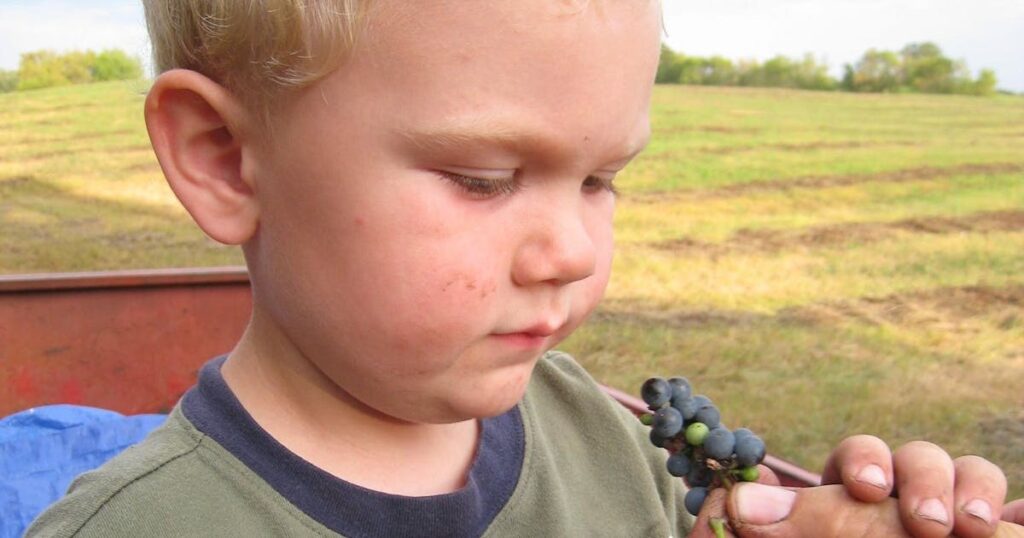Clitheroe – The raspberry bushes grew along a gravel road in Bemidji not far from our house. I would never have noticed them if my husband, a farmer's son, hadn't walked up to them and started picking berries. He gave me a few. I grimaced.
Would you eat berries from the roadside? What if the city sprayed them with chemicals? What if exhaust fumes from passing cars? What if birds and insects soiled the berries?
My husband wasn't upset. There was no sign of pesticide spraying. The birds were eating them, so that was good enough. I hesitantly took one. It was sour, but not sour that it made my mouth water. It had a sweet taste, too. Before I knew it, I had eaten a handful and left the rest for the birds.
One of the biggest changes for people moving from the city to the countryside is trusting the land around them as a source of food. Like me, many of us, especially in the 1970s and 1980s, grew up eating only food sold in grocery stores. Some of my neighbors in Plymouth grew their own vegetables, but my family never did. I trusted grocery store food in plastic packaging, assuming that food companies had hired experts and sanitary processes to ensure safety.
I had read the novel The Jungle by Upton Sinclair, which led to the passage of food safety laws in the United States, and I thought that was what was going to make me safe. To me, it seemed like food was best eaten after it had gone through a system, tested, and approved. The wild world seemed full of pathogens. That was my perspective, never mind that throughout human history, people have thrived by eating wild things. I and many of my peers were also products of a modern food system that forbade us from growing or gathering our own food.
Those who grew up in rural Minnesota may laugh at my ignorance; they have been gardening and foraging for food for generations.
In recent years, collecting mushrooms, wild asparagus, plums and berries has become popular again. The activity has become so popular that the DNR is considering limiting the amount collectors can take from state parks. The public will be able to comment on the matter later this year. Well-known forager Sam Thayer says on his website that his 2006 book, “The Forager's Harvest,” has sold more than 250,000 copies.
Dandelions are edible. Hosta buds are edible. Purslane, a wild succulent that often grows in gardens, is edible, but should be avoided by people with kidney disease. Recently, a new yellow flower started to appear in our hayfield. An online wildflower website described it as salsify, a plant that is edible from the flower to the root.
Keeping chickens was a big step for me. Wild plants are one thing, but growing your own meat is a whole other story. You can get salmonella from chicken, E. coli from ground beef, and trichinosis from pork. Plus, eating too many of certain types of fish can give you mercury poisoning.
We ordered 25 chicks and raised them in a small shed near our house, adding an extra perimeter when they got bigger. Once they were big enough to eat, we processed them ourselves over a two-day period. My job was to pluck them, which was hard work, so on the second day my parents-in-law came over to help.
I had a lot of trepidation eating farm-raised chicken for the first time. It seemed too easy. It wasn't inspected. It didn't have a USDA stamp of approval or come in a neat plastic tray. We were the only ones who thought we knew what we were doing. My husband had no hesitation and I hesitantly followed his instructions. It was delicious. And we didn't get sick.
Since then, I have been baking bread using my own organic wheat.
There is nothing wrong with buying food from the grocery store, we still buy much of our food from local stores, especially in the winter after we run out of our home grown vegetables.
Living in rural Minnesota has been a journey of trusting myself, of being able to do more than I thought I could. I don't need experts standing between me and my food. In fact, our food is healthier that way. We know exactly what those chickens ate (organic feed and careless insects). We don't feed them antibiotics. We know our vegetables are grown without chemicals or commercial fertilizers. And we know there's nothing better than wild raspberries freshly picked off the bush.



